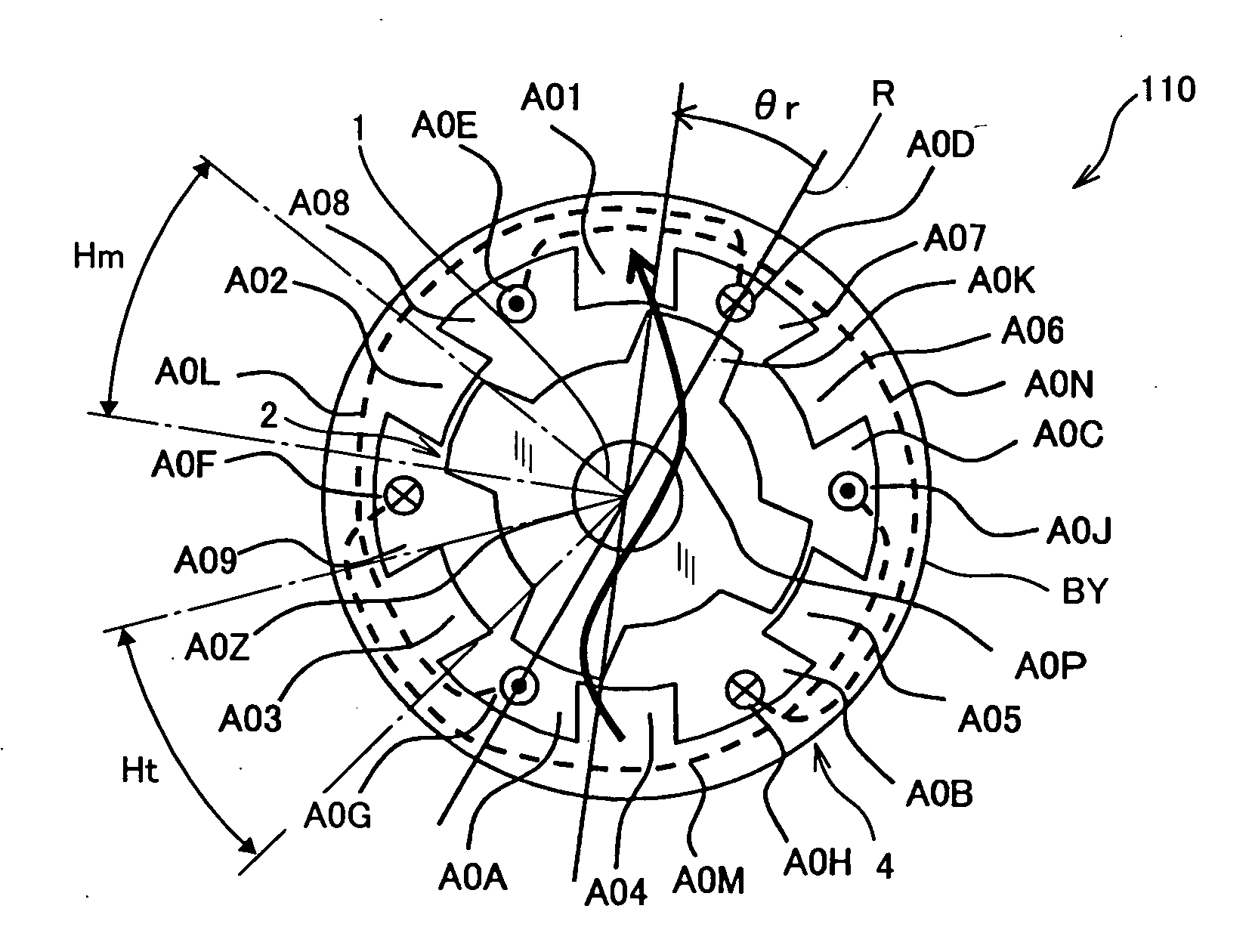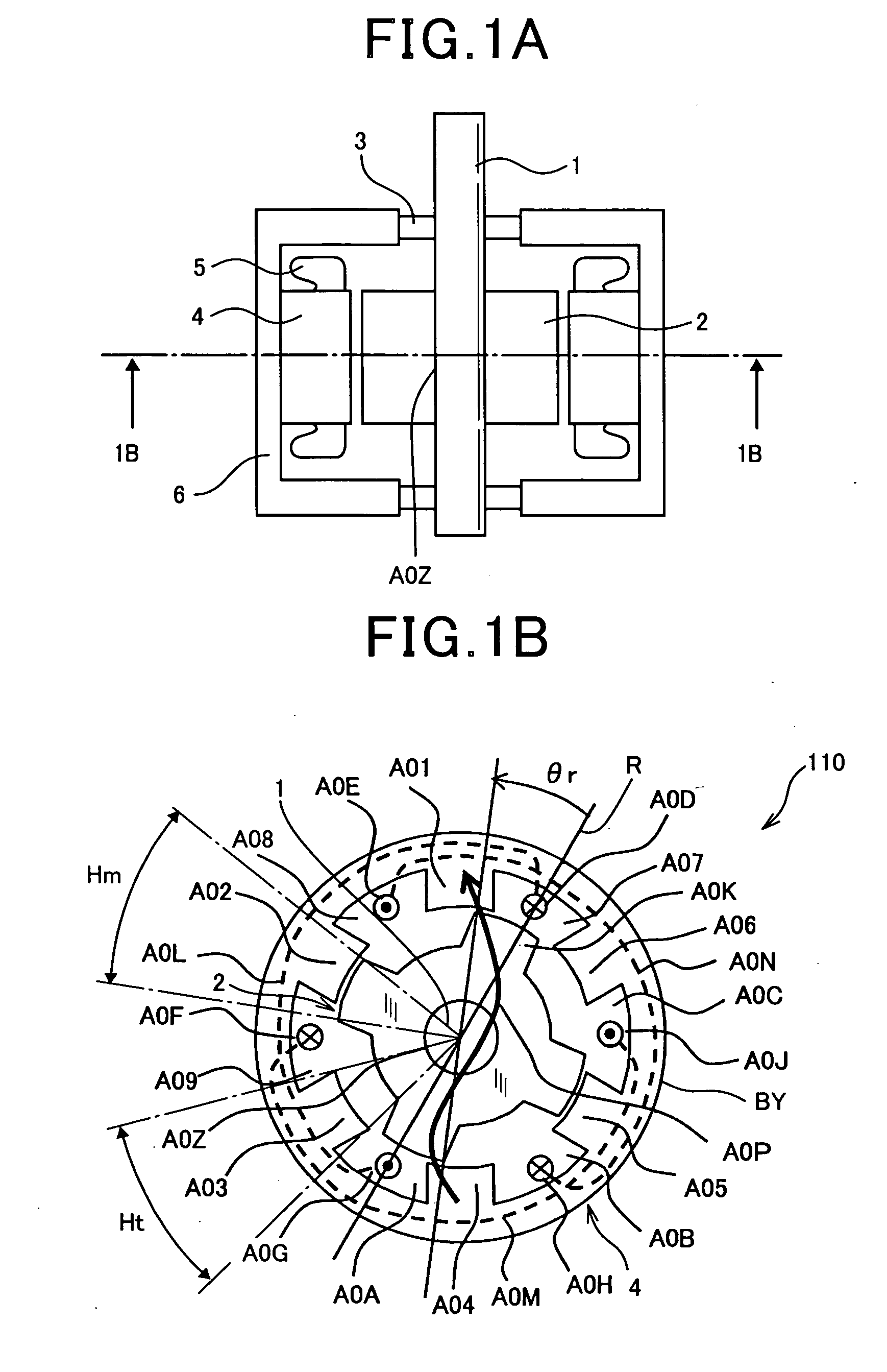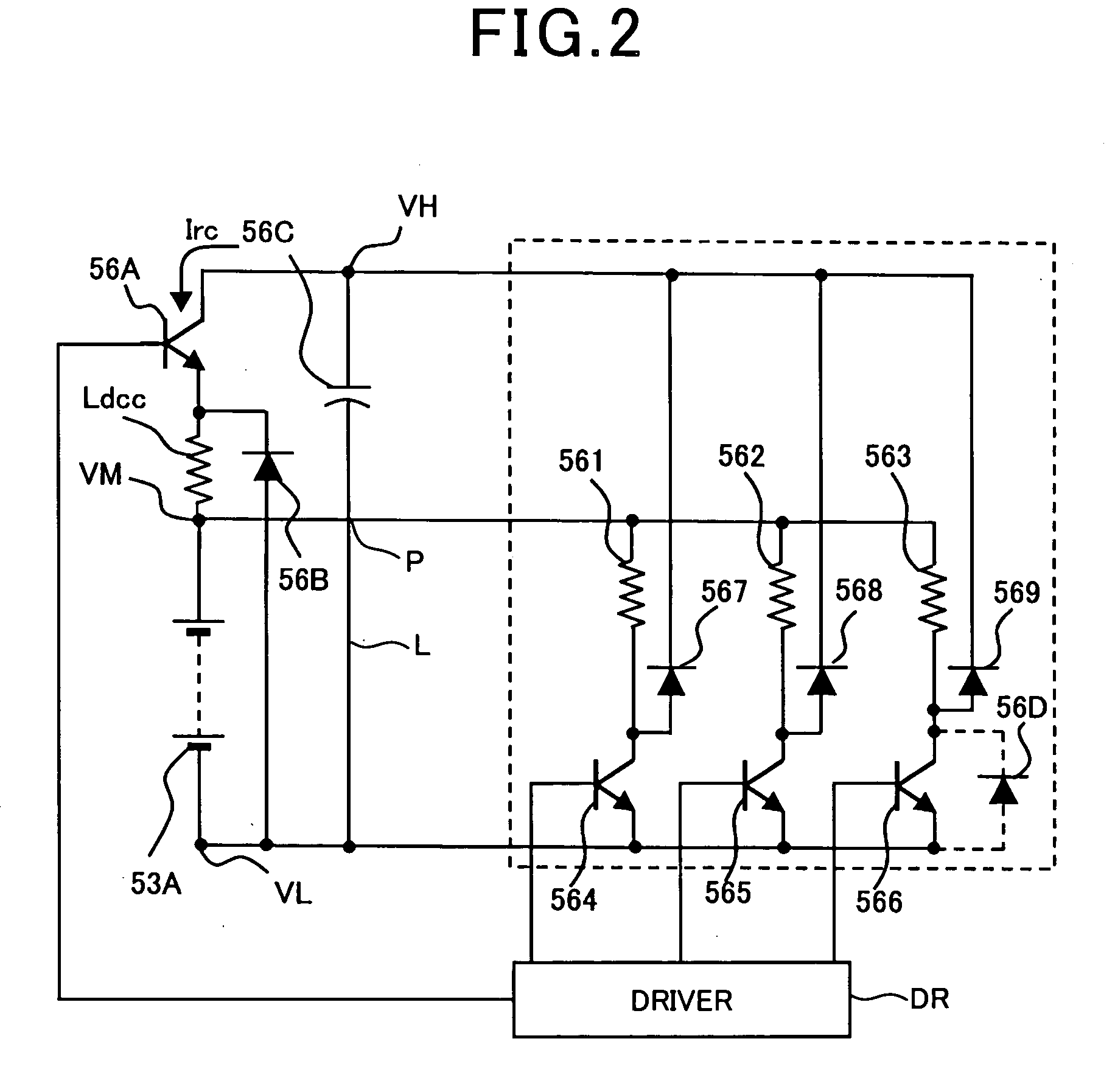Reluctance motor with improved stator structure
a technology of stator structure and resistance motor, which is applied in the direction of motor/generator/converter stopper, dynamo-electric converter control, etc., can solve the problem of peak torque, teeth, and insufficient utilization of torque, so as to reduce the efficiency of motor and reduce the cost of control device. , the effect of reducing the efficiency of the inverter
- Summary
- Abstract
- Description
- Claims
- Application Information
AI Technical Summary
Benefits of technology
Problems solved by technology
Method used
Image
Examples
first embodiment
[0198]Referring to the drawings, in which like reference characters refer to like parts in several figures, there is illustrated a synchronous reluctance motor 110.
[0199]The motor 110 illustrated in FIGS. 1A and 1B is provided with an output shaft 1 and a four salient pole rotor (movable member) 2. The motor 110 is also provided with a pair of bearings 3, a substantially annular stator core 4, and a substantially cylindrical inner hollow motor housing 6 with an opening in its axial direction.
[0200]The four salient pole rotor, referred to simply as “rotor”, 2 has a substantially annular shape and a through hole A0Z at its center portion in its axial direction. The rotor 2 is coaxially is installed in the motor housing 6. An axis passing the center portion of the rotor 2 in the axial direction thereof will be referred to as “center axis” hereinafter.
[0201]The output shaft 1 is fixedly mounted on the inner surface of the through hole A0Z of the rotor 2. The output shaft 1 is disposed i...
second embodiment
[1776]A reluctance motor according to the second embodiment of the present invention will be described hereinafter with reference to FIGS. 103 and 104.
[1777]Like elements between the reluctance motor 110A and the reluctance motor 770 according to the second embodiment, to which like reference characters are assigned, are omitted or simplified in description.
[1778](a), (b), (c), and (d) of FIG. 103 schematically illustrate an example of the structure of the reluctance motor 770 according to the second embodiment of the present invention.
[1779]In comparison to the structure of the motor 1 WA illustrated in FIG. 9, the reluctance motor consists of the stator 11F and a rotor J61.
[1780]The rotor J61 is designed as a two-salient pole rotor as well as the rotor 11E.
[1781]The different point between the rotor J61 and the rotor 11E is that the circumferential electrical angular width Hm of each of the salient poles of the rotor J61 is set to 75 electrical degrees. Note that the circumferenti...
third embodiment
[1809]A reluctance motor according to the third embodiment of the present invention will be described hereinafter with reference to FIGS. 105 and 106.
[1810]Like elements between the reluctance motor 110 and the reluctance motor 780 according to the third embodiment, to which like reference characters are assigned, are omitted or simplified in description.
[1811](a), (b), (c), and (d) of FIG. 105 schematically illustrate an example of the structure of the reluctance motor 780 according to the third embodiment of the present invention.
[1812]In comparison to the structure of the motor 110 illustrated in FIG. 1B, the reluctance motor consists of the stator 4 and a rotor 2X.
[1813]The rotor 2X is designed as a four-salient pole rotor as well as the rotor 2.
[1814]The different point between the rotor 2X and the rotor 2 is that the circumferential electrical angular width Hm of each of the salient poles of the rotor 2X is set to 45 electrical degrees.
[1815]A control device, such as control d...
PUM
 Login to View More
Login to View More Abstract
Description
Claims
Application Information
 Login to View More
Login to View More - R&D
- Intellectual Property
- Life Sciences
- Materials
- Tech Scout
- Unparalleled Data Quality
- Higher Quality Content
- 60% Fewer Hallucinations
Browse by: Latest US Patents, China's latest patents, Technical Efficacy Thesaurus, Application Domain, Technology Topic, Popular Technical Reports.
© 2025 PatSnap. All rights reserved.Legal|Privacy policy|Modern Slavery Act Transparency Statement|Sitemap|About US| Contact US: help@patsnap.com



